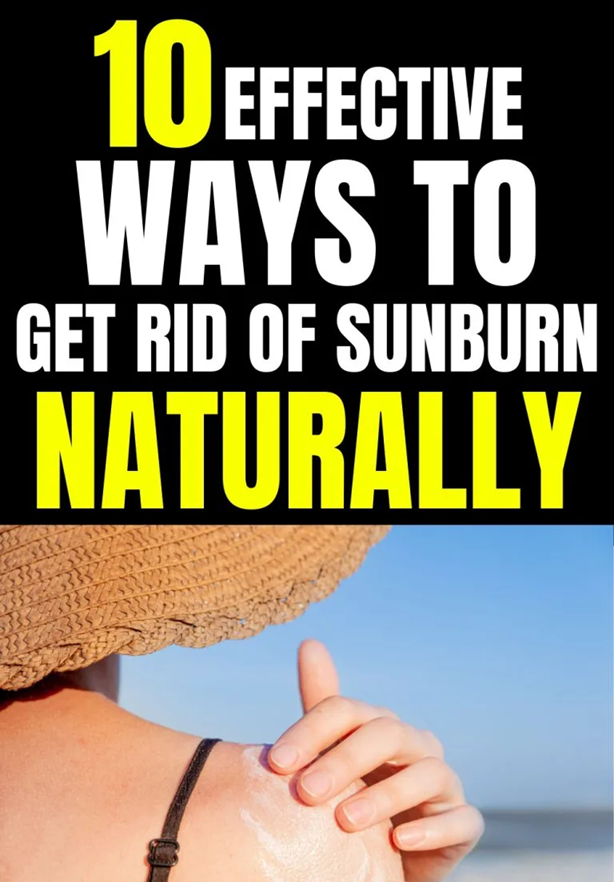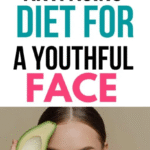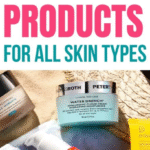What’s Actually Happening Under Your Skin?
Sunburn is your skin’s way of screaming, “Too much!” UVB rays penetrate the upper layers of skin and damage DNA in your skin cells.
The body reacts with inflammation, which causes redness, heat, and pain. It also sends extra blood flow to the area to kickstart healing.
That’s why your skin feels hot and looks flushed.
Then comes the peeling. It’s not your skin being dramatic, it’s shedding damaged cells that could become problematic down the line.
And the tight, dry feeling? That’s moisture loss. Your skin’s barrier has been compromised, so it can’t hold hydration like it usually does.
Mild sunburns (first-degree) affect the outer layer. But if you’re seeing blisters or intense swelling, it might be a second-degree burn.
In that case, skip the home remedies and get medical care.
Your Natural Sunburn SOS Kit (Things You Already Own)
Time to raid your kitchen and bathroom. These home remedies are gentle, natural, and surprisingly effective.
Aloe Vera Gel
You’ll need:
- Fresh aloe leaf or pure aloe gel (no alcohol, no fragrance)
Snip open an aloe vera leaf and scoop out the gel, or use a store-bought version that lists aloe as the main ingredient.
Dab it gently over the burned area. Don’t rub, you’re soothing, not exfoliating.
Aloe has anti-inflammatory properties that calm the skin. It also hydrates and promotes cell turnover.
You can chill the gel before applying for an extra cooling effect. Reapply every few hours.
Cucumber Compress
You’ll need:
- 1 fresh cucumber
- Blender or grater
Cucumbers aren’t just for spa photos. They’re loaded with water and antioxidants that reduce swelling and help your skin chill out.
Blend or grate the cucumber into a paste, then apply it like a mask.
You can also slice it and lay the pieces on your skin, especially for facial burns.
It feels refreshing instantly, like pressing a cool cloth onto a headache. Leave it on for 15-20 minutes and rinse with lukewarm water.
Cold Milk Soak
You’ll need:
- Whole milk
- Soft cotton cloth
The fat and protein in milk help coat and calm the skin. Dip a soft cloth in cold milk, wring it out, and place it on the sunburn for 10 minutes.
Repeat a few times a day.
It sounds strange, but it works. The lactic acid in milk has mild exfoliating properties, which can help with healing.
Raw Honey
You’ll need:
- Raw, unfiltered honey
Honey is naturally antibacterial and full of enzymes that support healing. Spread a thin layer over the sunburn (not on open blisters).
Let it sit for 15–20 minutes, then rinse off with lukewarm water.
It’s sticky, yes. But it’s like giving your skin a gentle, nourishing hug. And it’s especially good if your skin feels tight or itchy.
Yogurt Mask
You’ll need:
- Plain, full-fat yogurt
Yogurt cools the skin and restores beneficial bacteria. Slather it on sunburned areas, leave it for 15 minutes, then wash off.
It’s one of the most comforting remedies for a hot, itchy back or chest.
Make sure it’s unsweetened and unflavored, you don’t need extra ingredients messing with sensitive skin.
Green or Black Tea Soak
You’ll need:
- 2-4 tea bags
- Warm water
- Cotton pads or a clean cloth
Brew tea, let it cool, and use cotton pads to dab it on the sunburn. Tannins in tea help reduce inflammation and draw out heat.
If your eyes or cheeks are burned, cooled tea bags work like a charm.
You can even add cooled tea to a bath for full-body relief.
Potato Pulp or Juice
You’ll need:
- 1 raw potato
- Blender or grater
Potatoes have natural starches and compounds that soothe burns. Blend or grate one into a mush, and apply the pulp directly to your skin.
Let it sit for 20 minutes and rinse.
It’s messy, but incredibly effective for large areas like shoulders or thighs.
Not All “Natural” Things Are Sunburn-Friendly
Here’s the thing, just because something comes from a plant or smells like a forest doesn’t mean it’s going to be kind to sunburned skin.
In fact, a lot of “natural” ingredients are too rich, too irritating, or just plain suffocating for your already-fragile skin barrier.
Avoid these common mistakes:
- Coconut oil: It’s a favorite in DIY skincare, but not for burns. Coconut oil is thick and occlusive, great for locking in moisture when your skin is healthy, but terrible when it’s hot and damaged. It traps heat and can slow healing.
- Essential oils: Lavender, peppermint, eucalyptus, they sound healing, but they’re concentrated and can be way too harsh, especially when your skin is raw. Even diluted, they can trigger more redness or a reaction.
- Butter or petroleum jelly: These create a seal that doesn’t allow heat to escape. That warm, sticky sensation? It’s your skin begging for airflow, not another layer of grease.
- Apple cider vinegar: Some people swear by it for skin issues, but when you’re sunburned, it’s too acidic. It can sting like crazy and damage the top layer even more.
- Thick balms and ointments: Unless they’re formulated specifically for burns, most thick skincare products aren’t helpful here. They just sit on the skin and make things feel hotter.
When your skin’s this irritated, think lightweight, cooling, and fragrance-free. If something smells too strong or feels heavy, trust your gut and skip it.
Hydrate from the Inside Out
Healing starts within. A sunburn pulls water from deeper layers of the skin.
That dehydration doesn’t just show up as tight, flaky skin, it can leave you feeling wiped out, cranky, and sluggish, like you’re running on half a battery.
Rehydrating helps your body recover faster, flushes out inflammation, and supports your skin as it tries to repair itself.
Here’s what helps:
- Water (lots of it): Aim for at least 8–10 glasses a day, more if you’re sweating. Sip consistently throughout the day rather than chugging all at once.
- Coconut water: It’s packed with natural electrolytes like potassium and magnesium, which help replenish what your body loses when it’s inflamed or dehydrated.
- Cucumber or watermelon juice: These fruits are more than 90% water and loaded with vitamins. Blend them up or snack on them straight for hydration that feels refreshing and tastes like summer.
- Herbal teas: Go for chamomile (anti-inflammatory), peppermint (cooling), or hibiscus (rich in antioxidants). Just avoid caffeine, it can dehydrate you further.
And yes, eat your water, too. Snack on hydrating fruits and veggies like:
- Oranges, grapes, and strawberries
- Melons (cantaloupe, honeydew, watermelon)
- Lettuce, celery, and bell peppers
Hydrating through food is especially helpful if you’re not feeling up to drinking a ton of fluids.
It also helps keep digestion smooth when your body’s under stress.
One underrated tip? Add a pinch of sea salt and a squeeze of lemon to your water to help your body absorb it better.
It sounds fancy, but it’s an easy way to give your cells exactly what they need.
Cool It Down – The Right Way
Don’t grab a bag of frozen peas. Extreme cold can shock sunburned skin.
Try this instead:
- Take lukewarm (not cold) showers
- Pat dry gently with a soft towel
- Wear loose cotton clothing
- Sleep on soft, breathable sheets
Let your skin breathe. Tight clothes will only make you more uncomfortable.
Skin Aftercare: Don’t Rush the Healing

Once the heat calms down, your skin enters its awkward phase, flaking, peeling, and itching like nobody’s business.
It can be strangely satisfying to peel those flaky bits, but try to resist. Picking at it can lead to scarring, delay healing, or even trigger an infection.
Here’s how to treat your skin kindly:
- Moisturize often: Use a fragrance-free lotion or natural emollient like shea butter or oat cream. Apply it right after a shower or cool rinse while your skin is still damp to help lock in moisture. You might need to reapply multiple times a day.
- Skip the exfoliants: No scrubs, no glycolic acid, no chemical peels. Even that loofah? Let it sit out. Your skin is working hard to heal; it doesn’t need exfoliation on top of that.
- Stay out of the sun: Your skin is still vulnerable and prone to further damage. Cover up with soft, breathable fabrics, and if you have to be outside, apply a mineral sunscreen with zinc oxide. Look for SPF 30 or higher and reapply every two hours.
- Cool it with the hot showers: Stick to lukewarm water and pat dry with a clean, soft towel. Avoid vigorous rubbing.
And keep this image in mind: your skin might look okay on the surface, but underneath it’s like a cracked phone screen with a fresh screen protector, fine at a glance, fragile with any pressure.
Give it time, be patient, and treat it like you would a healing wound: gently and consistently.
When to Worry (And What Not to Ignore)
Some burns cross the line from annoying to alarming, and no amount of aloe or yogurt will be enough.
If your sunburn feels like more than just a bad day at the beach, listen to your body.
Call your doctor if you experience:
- Blisters covering a large area of your body: A few small ones are manageable, but widespread blistering signals a more serious second-degree burn.
- Fever, chills, or dizziness: These are signs your body might be having a systemic reaction. This isn’t just sunburn, this could be sun poisoning.
- Nausea or vomiting: Another red flag that your body is overwhelmed and dehydrated.
- Signs of infection: If you notice increasing redness, pus, swelling, or a burn that feels warm or painful to the touch days later, it may be infected.
Sunburn should improve within a couple of days, not worsen. If your symptoms keep getting more intense, it’s time to let a medical professional weigh in.
And when it comes to children and babies? Don’t wait and see. Their skin is much thinner and more sensitive, so any sunburn can be serious.
Even mild redness in a baby should be evaluated by a pediatrician.
If you’re unsure whether something is normal or not, err on the side of caution.
It’s always better to make the call and be told you’re fine than to wait too long and wish you hadn’t.
Next Time, Let’s Not Burn (Natural Prevention Tips)
Sunburns are sneaky, but they’re not inevitable. Most of us don’t even realize how much sun we’re soaking up until it’s too late, especially when there’s a breeze or cloud cover.
But with a few intentional choices, you can avoid that fiery aftermath altogether.
Try this next time:
- Wear a wide-brim hat: Think big, floppy beach hats or safari-style brims that cover your face, ears, and neck. A ball cap doesn’t cut it.
- Use zinc oxide sunscreen (SPF 30+): Go for mineral-based sunscreens with zinc or titanium dioxide. They’re gentler on sensitive skin and offer broad-spectrum protection.
- Reapply every 2 hours: Especially if you’re sweating or swimming. That initial layer won’t last all day.
- Avoid midday sun (10 a.m. to 4 p.m.): That’s when UV rays are the strongest, even on overcast days.
- Wear loose, light-colored clothes: Fabrics like cotton or linen let your skin breathe while bouncing off some of the sun’s rays. Dark colors absorb heat.
- Don’t forget sunglasses: UV damage isn’t limited to your skin. Your eyes need protection too, look for lenses with full UVA/UVB coverage.
And here’s something most people forget: don’t rely on makeup or moisturizers that “include SPF.”
They’re better than nothing, sure, but rarely provide the protection the label implies, unless you’re using a huge amount.
Better to apply a real sunscreen underneath and treat SPF makeup as a bonus.
Clouds don’t block UV. Neither does that “just a quick walk” nor the drive with your arm hanging out the window.
Snow, sand, and water reflect sunlight back at you, increasing exposure even when you’re in the shade.
Think of prevention as skin insurance, it costs less energy now than the days of healing later.?
Treat Your Skin Like It’s on Vacation, Too
Sunburn happens. It doesn’t mean you failed at skincare. It just means your skin got overwhelmed. Let it rest, treat it gently, and skip the guilt trip.
Aloe, cucumber, milk, and honey, you don’t need a high-end serum to feel better. Healing takes a few days, but a little care (and a lot of water) goes a long way.
Now go pour yourself a glass of cucumber water and chill. Your skin’s got this.

